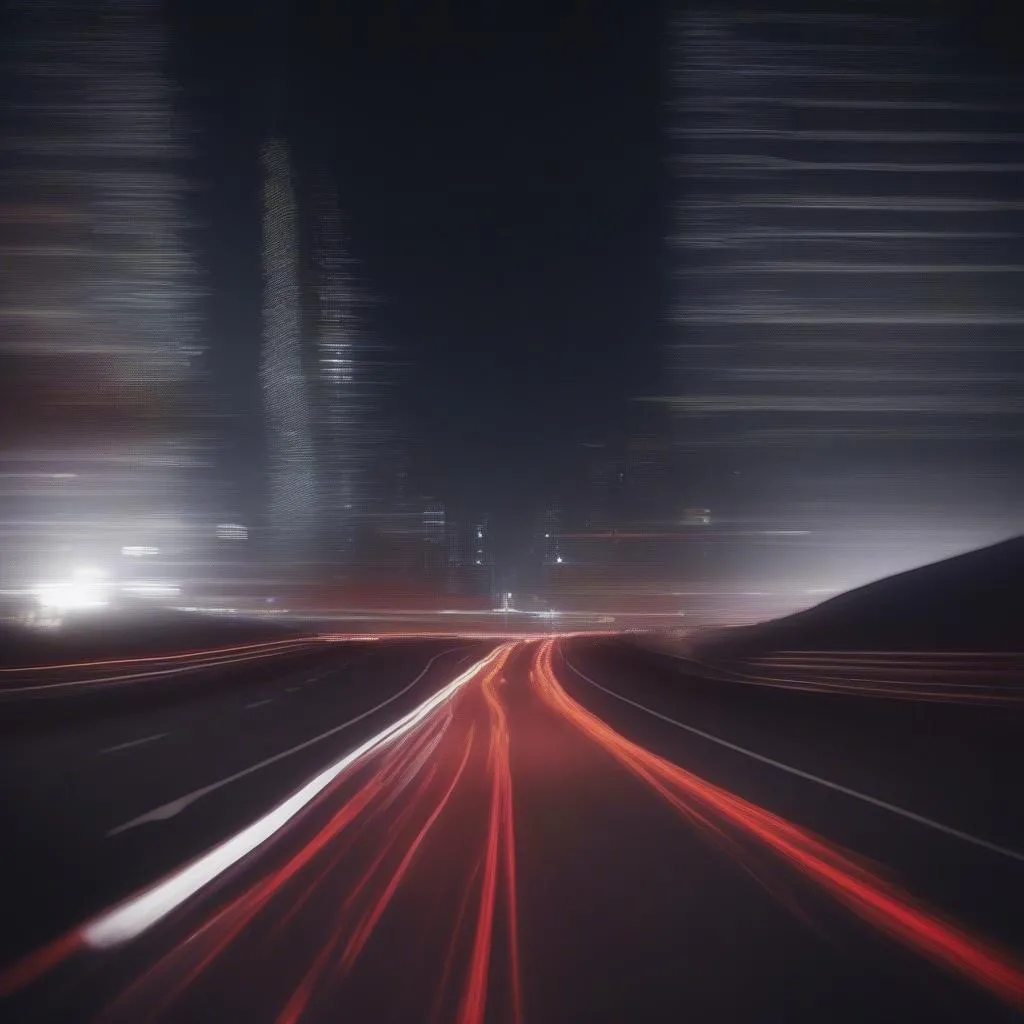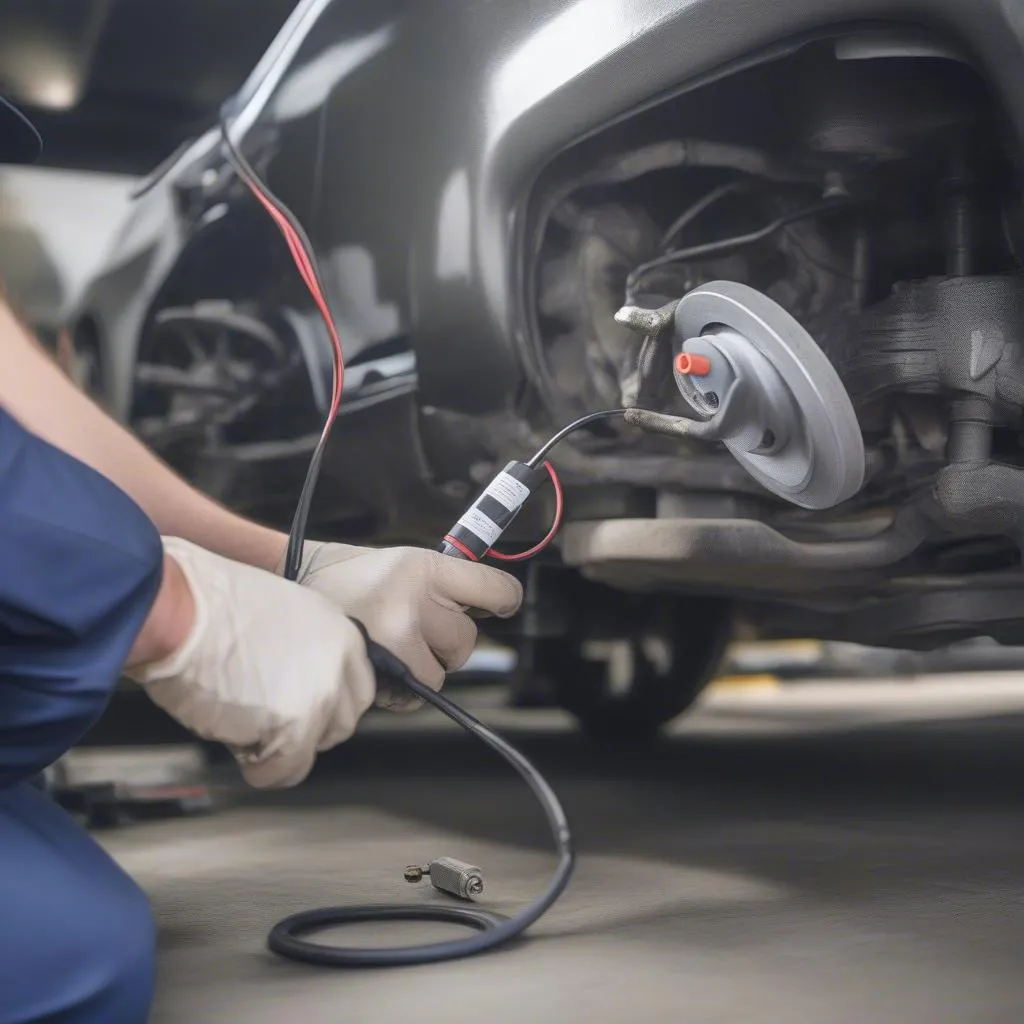Have you ever been driving down the road and suddenly noticed both your ABS and brake lights illuminating the dashboard? It can be a concerning situation, leaving you wondering what’s going on and if it’s safe to continue driving. Let’s dive into the reasons why this happens and what you should do.
Why Your ABS and Brake Lights Might Be On at the Same Time
Understanding the Warning Lights
The ABS (Anti-lock Braking System) and brake lights are crucial warning signals designed to inform you of potential issues within your car’s braking system. They’re interconnected, with the ABS system relying heavily on the braking system’s components to function properly.
Common Causes and Explanations:
- Low Brake Fluid: One of the most frequent reasons for both lights to come on simultaneously is low brake fluid. Brake fluid is essential for hydraulic braking systems, and when the level drops, it can trigger both the ABS and brake light warnings.
- Faulty Wheel Speed Sensor: The ABS system utilizes wheel speed sensors to determine the speed of each wheel. If one or more of these sensors malfunction, it can cause a discrepancy in the system’s calculations, triggering the warning lights.
- Brake Pad Wear: While less common, excessive wear on your brake pads can sometimes trigger both warning lights. When brake pads wear down, it can affect the braking system’s overall efficiency, leading to the ABS light illuminating alongside the brake light.
- Faulty ABS Module: The ABS module is the brain of your ABS system, and if it malfunctions, it can cause a cascade of problems. This can result in both the ABS and brake lights turning on.
- Electrical Problems: Sometimes, electrical issues within the vehicle’s wiring system can affect the ABS and brake lights. A short circuit or loose connection could cause them to malfunction and turn on unnecessarily.
What to Do if Your ABS and Brake Light Are On?
-
Pull Over Safely: When both the ABS and brake light are on, it’s essential to pull over to a safe location as soon as possible. This allows you to assess the situation without compromising safety.
-
Check Brake Fluid: The first step is to inspect your brake fluid level. Look for a reservoir near the engine compartment, usually marked with a “Brake Fluid” label. If the fluid is low, you need to top it off. It’s crucial to use the correct type of brake fluid, as specified in your owner’s manual.
-
Inspect for Leaks: If the brake fluid level was low, check for leaks. Look for wet spots or signs of fluid dripping near the brake calipers, brake lines, or master cylinder.
-
Seek Professional Help: If you find a leak or suspect a faulty wheel speed sensor, ABS module, or electrical issue, don’t hesitate to consult a professional mechanic. A qualified technician can diagnose the problem accurately and perform the necessary repairs.
Troubleshooting ABS and Brake Lights: Tips for the DIY Mechanic
Note: If you’re comfortable working on your vehicle and have the necessary tools, you can attempt to diagnose the problem yourself. But be warned: working with brake systems requires proper knowledge and expertise. If you’re not confident in your abilities, always consult a professional.
Here are some troubleshooting steps:
- Check the Brake Fluid: Ensure the brake fluid level is sufficient.
- Inspect the Wiring: Look for any loose or corroded wiring connections related to the brake system and ABS sensors.
- Use a Diagnostic Scanner: A diagnostic scanner can help you pinpoint the source of the problem. It can read codes stored in the ABS module and provide valuable information about the malfunction.
- Test the Wheel Speed Sensors: If you suspect a faulty wheel speed sensor, you can test its resistance using a multimeter.
FAQs about ABS and Brake Lights
Q: Can I drive with both the ABS and brake light on?
A: While you might be able to drive with both lights on, it’s generally not advisable. The warning lights indicate a potential problem with your braking system, and driving with a faulty braking system puts you and others at risk.
Q: How serious is it if the ABS and brake light are on?
A: The severity of the problem varies depending on the underlying cause. If it’s a simple low brake fluid issue, it can be easily fixed. But if it involves a faulty ABS module or other serious component, it requires immediate attention.
Q: Will my car still brake if the ABS and brake light are on?
A: While your car will still brake, the braking system might not function optimally. In some cases, the ABS might be disabled, which could affect your braking performance in emergency situations.
Q: Can I reset the ABS and brake lights myself?
A: You can try resetting the warning lights by disconnecting the battery for a few minutes, but this doesn’t guarantee it will fix the underlying problem. If the lights come back on, it indicates a persistent issue.
Conclusion:
Having both your ABS and brake light illuminate at the same time is a sign that something is wrong with your braking system. Don’t ignore it! Pull over safely and take the necessary steps to diagnose and fix the problem. If you’re unsure of the cause, don’t hesitate to seek professional help from a qualified mechanic. Remember, a reliable braking system is essential for safe driving.
 ABS and Brake Light On at the Same Time
ABS and Brake Light On at the Same Time
 Low Brake Fluid
Low Brake Fluid
 Faulty Wheel Speed Sensor
Faulty Wheel Speed Sensor
We hope this article provided helpful information about why your ABS and brake lights might be on at the same time and what you should do about it. If you have any further questions, feel free to leave a comment below!
For expert advice and assistance with diagnosing and repairing your car’s ABS and brake system, contact us today!
Whatsapp: +84767531508
We’re available 24/7 to help you get back on the road safely.